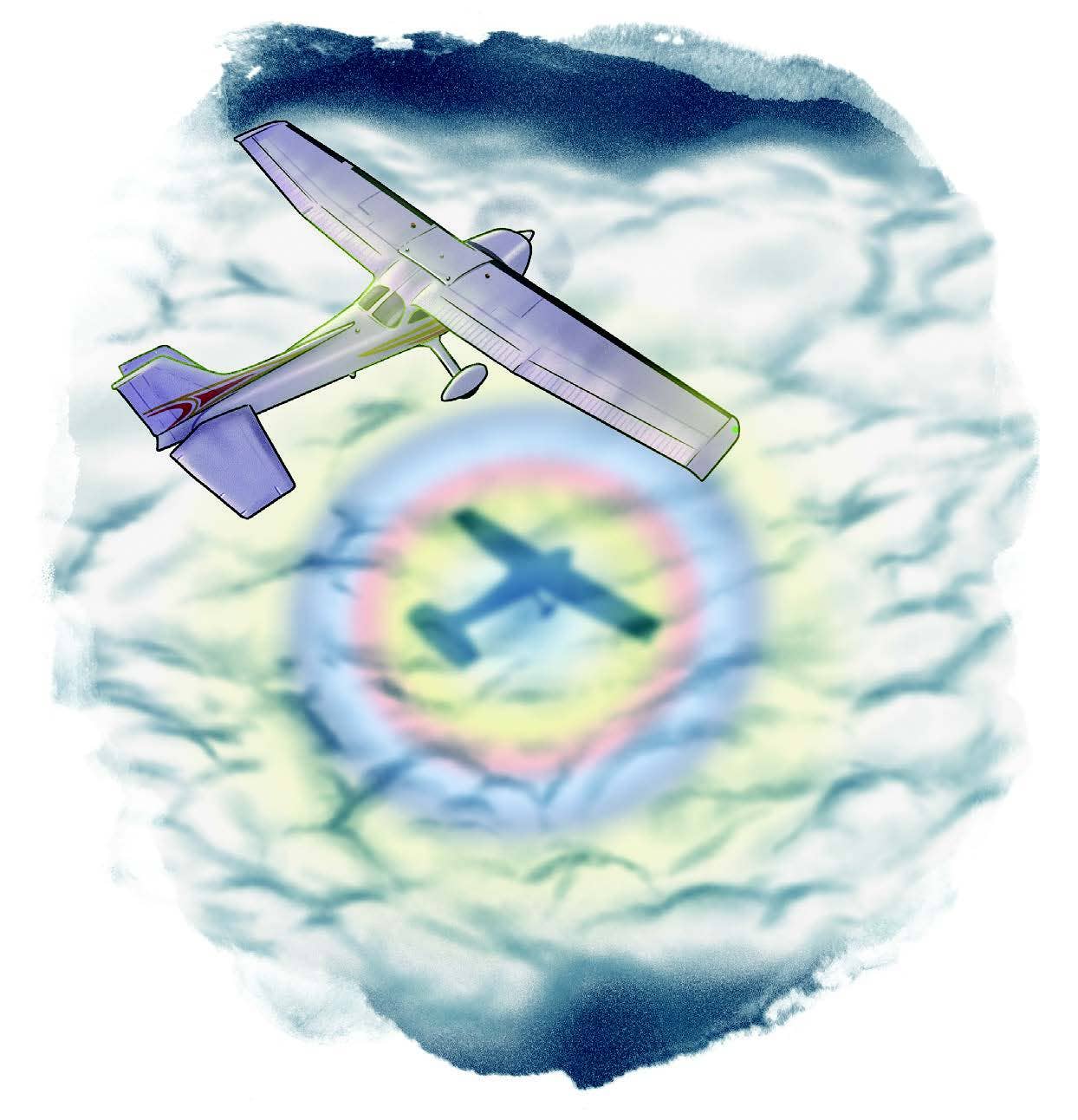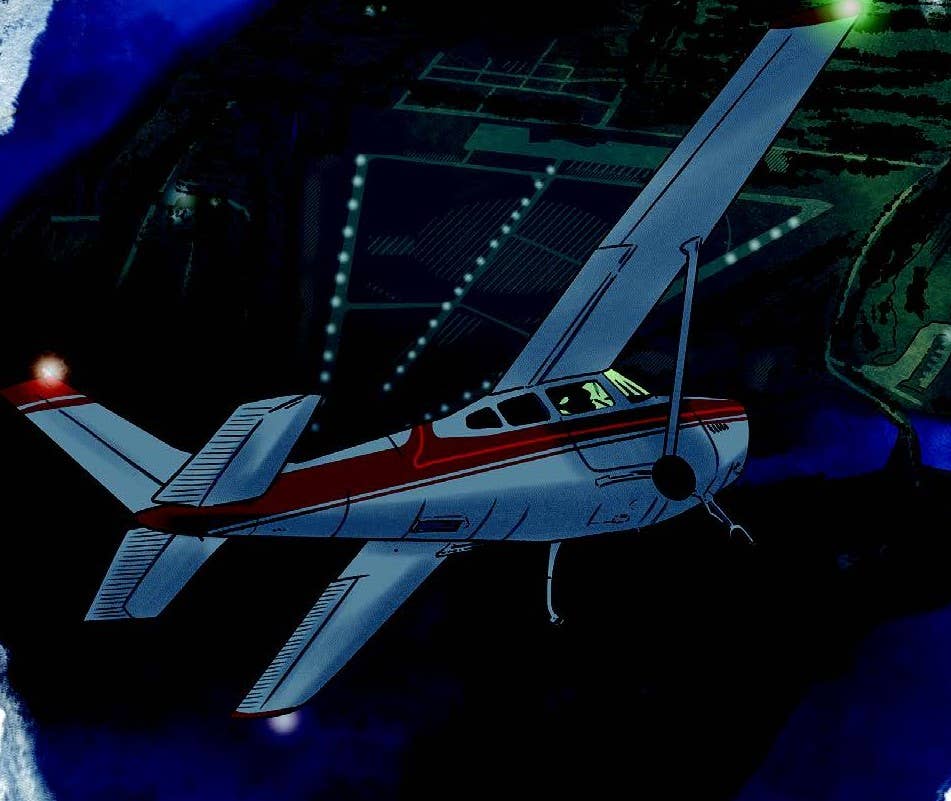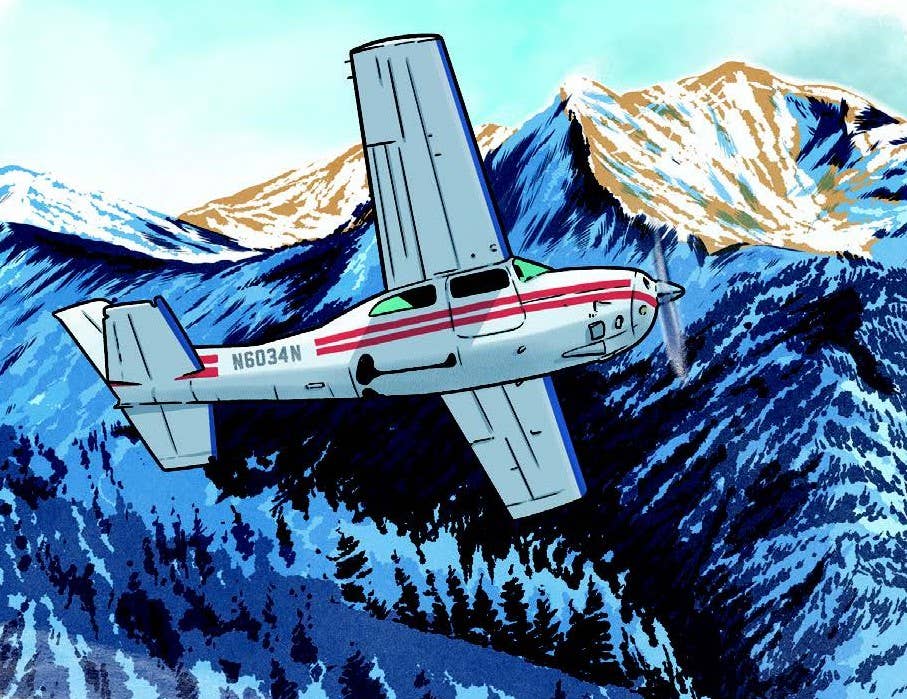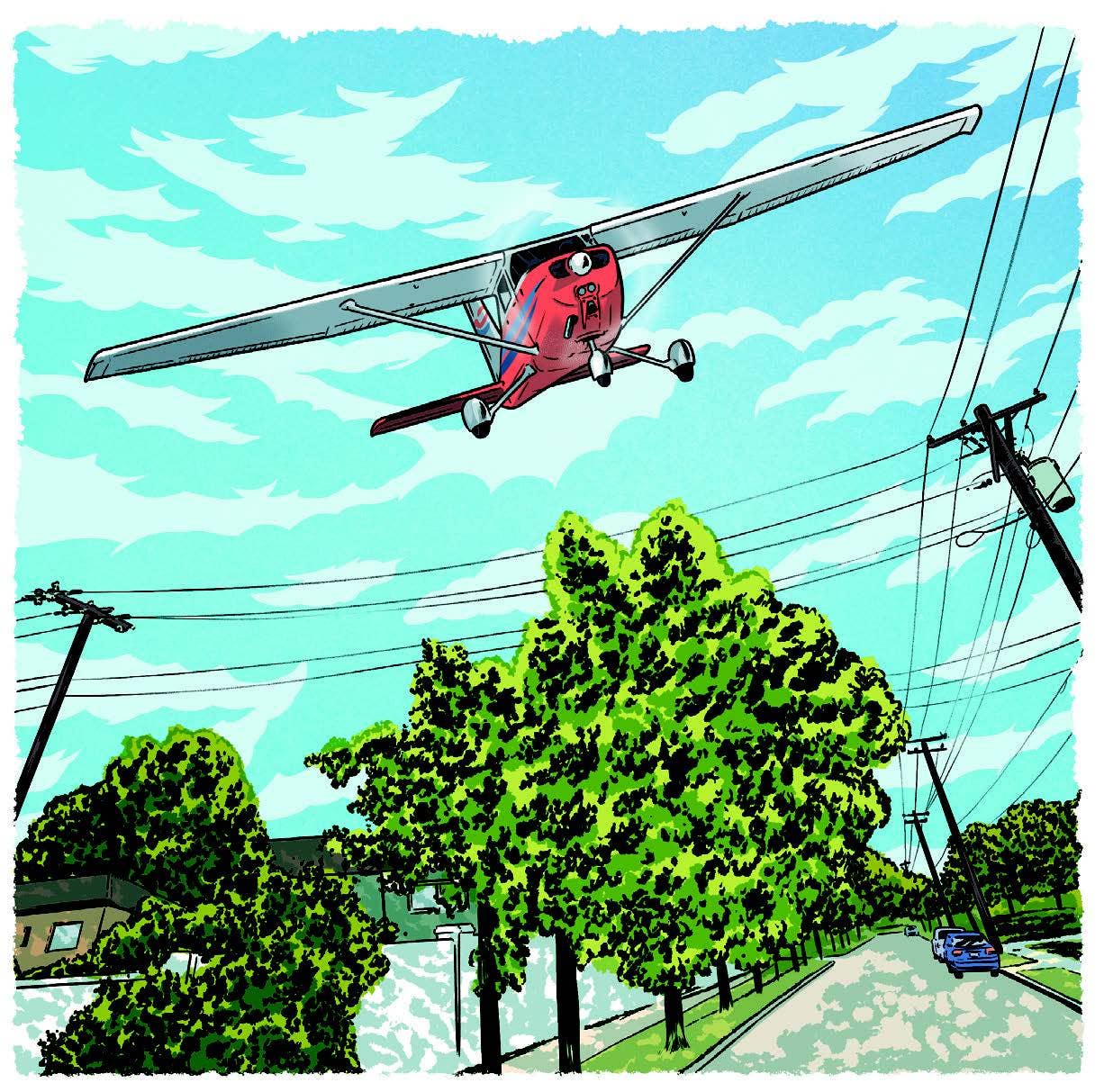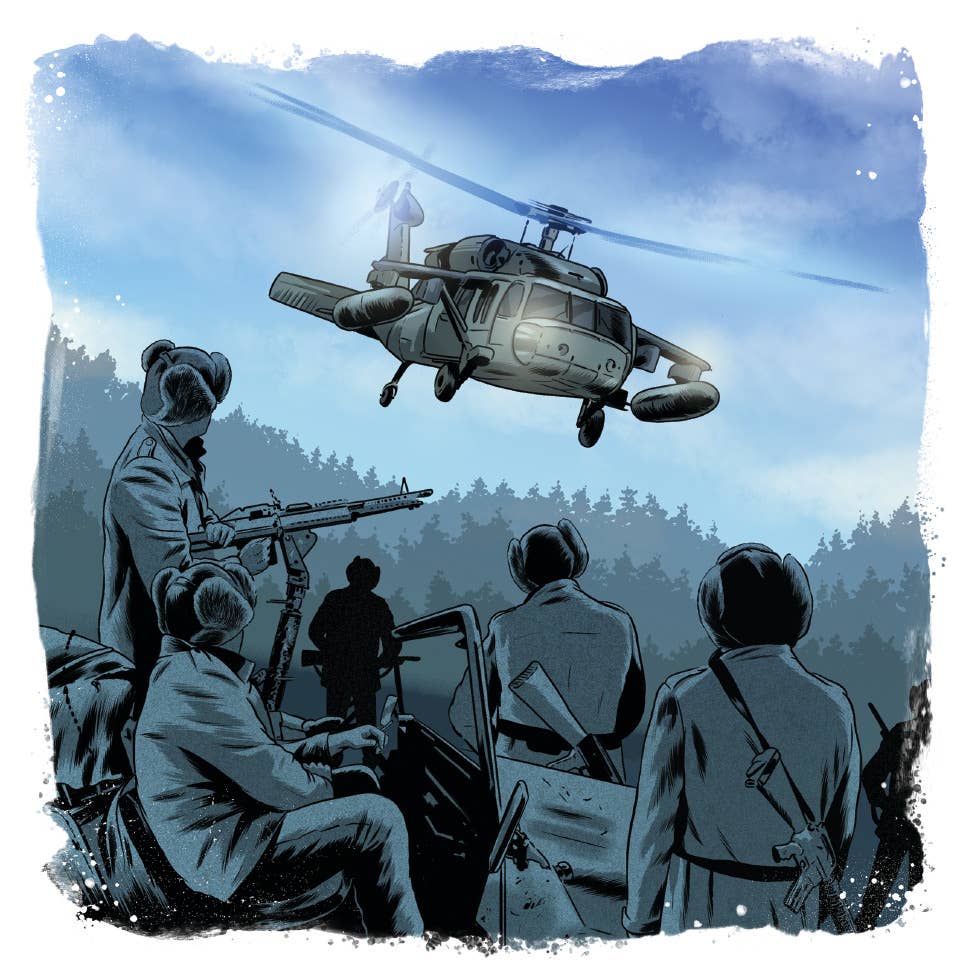
[Credit: Joel Kimmel]
As a newly minted U.S. Army aviator and UH-60 Black Hawk pilot, being based in the Republic of Korea in 1988 was an ideal first assignment. The cost of living was low, the people were friendly, and the food was great. And then there was the flying. There were few rules in Korea, and as young lieutenants and warrant officers we took advantage and “aired out” our UH-60s often.
If you're not already a subscriber, what are you waiting for? Subscribe today to get the issue as soon as it is released in either Print or Digital formats.
Subscribe NowThe rules were simple. Don’t fly into the prohibited area of the capital, Seoul, aptly named P-73. Don’t fly into the Korean president’s TFR. As with the U.S., these were likely to pop up unannounced, or sometimes even move. And don’t ever, ever, stray north of the DMZ (Demilitarized Zone), into the People’s Republic of Korea, also known as North Korea. The North Korean military was known to try and lure aircraft across the DMZ through MIJI, or meaconing, intrusion, jamming, and interference. They’d set up false NDBs to mimic stations in South Korea. In the winter, when fresh snow covered panels indicating the DMZ, they would set up false panels in North Korea, or use other means to lure crews across the border, then shoot them down. Part of our Korea check out was testing on our ability to navigate the DMZ.
One day I found myself on the mission board with another lieutenant and longtime friend, John. We had gone through the lieutenant basic course together and he was one class ahead of me in flight school. We were told to put some hours on an airframe, so we decided to make a day of it.
We would fly up to the northeast corner of South Korea by Sokcho and follow the DMZ to the west. We would hop into Camp Page in Cheongju for some gas and lunch, continue westbound to just north of Incheon, then follow the west coast of Korea down to our base, Camp Humphreys, near Pyeongtaek. A storm had recently come through and dumped some snow, so it promised to be a nice day for flying. Joining us was our crew chief, Sergeant Morey.
The western side of Korea is dominated by the Taebaek Mountain range, so the first half of our flight would follow valleys and ridgelines. It would be much like navigating in the Rockies. Our UH-60 was well equipped with two HSIs. There were rumors about some newfangled navigation system that was slowly coming online and would use satellites, but that was in the future. We did have a Doppler inertial navigation system, but it was so unreliable we would joke that if we taped 25 cents to it and threw it out the window, we could at least say we lost a quarter. So, we relied on our map, clock, and HSI. I would navigate the first half while John flew, then we would change out after lunch.
The flight progressed well. We hit the east coast of Korea, followed it up to the DMZ, then made a left turn to the west. I was right on the map, and our times were working out. At some point things started to seem a little off to me. A bridge was not where I thought it should be... a valley was not there... At some point I told John to keep flying up a valley to the west. He looked over at me and said, “You mean to the north?” I said no, to the west, and pointed to my HSI that was showing 270 degrees, or a west heading. He responded, “No, my HSI and the magnetic compass show us flying north, and we’ve been flying north for some time.”
I looked at the standby compass; it showed north. I looked at my HSI and it showed west. At some point my HSI had failed and drifted off by 90 degrees, but I did not get a “fail” flag. John then asked the question that was on all our minds. “Sam, are we in North Korea??” I looked at him and responded, “That’s one possibility.”
John immediately turned south, dove down as low as he could, and pulled the collective to get every knot of speed he could milk from our trusty stallion. He would throw in occasional jinks to the left and right in case a young North Korean conscript got a lucky shot off at us. I continued to try and locate us on the map, but everything was running together. Eventually we spotted a South Korean flag at a remote mountain airstrip. This was nothing more than a small dispersal strip with a control tower to be used if war broke out. At this point we knew we were in South Korea. The airstrip had no identifier, and I did not see it on a map. We were getting low on fuel but decided to continue a bit to see if we could nail down our location and proceed to Camp Page. But we agreed that if we got to a certain fuel state we would return to this airstrip for gas.
We continued for about 15 minutes, but our luck didn’t change. John, as pilot in command, made the decision to return to the South Korean airstrip and get gas. I made some calls on guard but got no response. As we made our final approach the control tower flashed red lights at us warning us off. Unfortunately by this point, other lights were flashing at us. Our low fuel lights.
We landed and were immediately surrounded by Jeeps mounted with .50 caliber machine guns and mean looking Republic of Korea (ROK) soldiers. Their tedium of being assigned to guard a remote airstrip was broken. They had purpose and life. We were escorted to the parking ramp, then given the signal to shut down.
I told Sergeant Morey to tell the guards we were Americans; we just needed some gas. He got out with his hands raised and was only able to get out “We’re Americans...” before being thrown to the ground and having a rifle put to his helmet. We eventually convinced the ROK soldiers we were not North Korean infiltrators, got some gas, and continued our merry way back home, deciding it was best to cut things short. Well, merry except for Sergeant Morey who, for some reason, was silent and sulking the entire way home. We wrote up the errant HSI and it was checked out by maintenance. The response was the one every pilot dreads. “Checked. Could not duplicate.” We then encountered the nonstop comments about lieutenants and maps. Until... a few days later our XO (executive officer) and the maintenance officer were flying the same aircraft, and it happened again. They, however, became hopelessly lost and had to land in a frozen rice patty, hike to a phone, and call for a fuel truck. I guess it goes to show you. Sometimes God smiles on fools and lieutenants.
This article was originally published in the March 2023, Issue 935 of FLYING.

Subscribe to Our Newsletter
Get the latest FLYING stories delivered directly to your inbox




